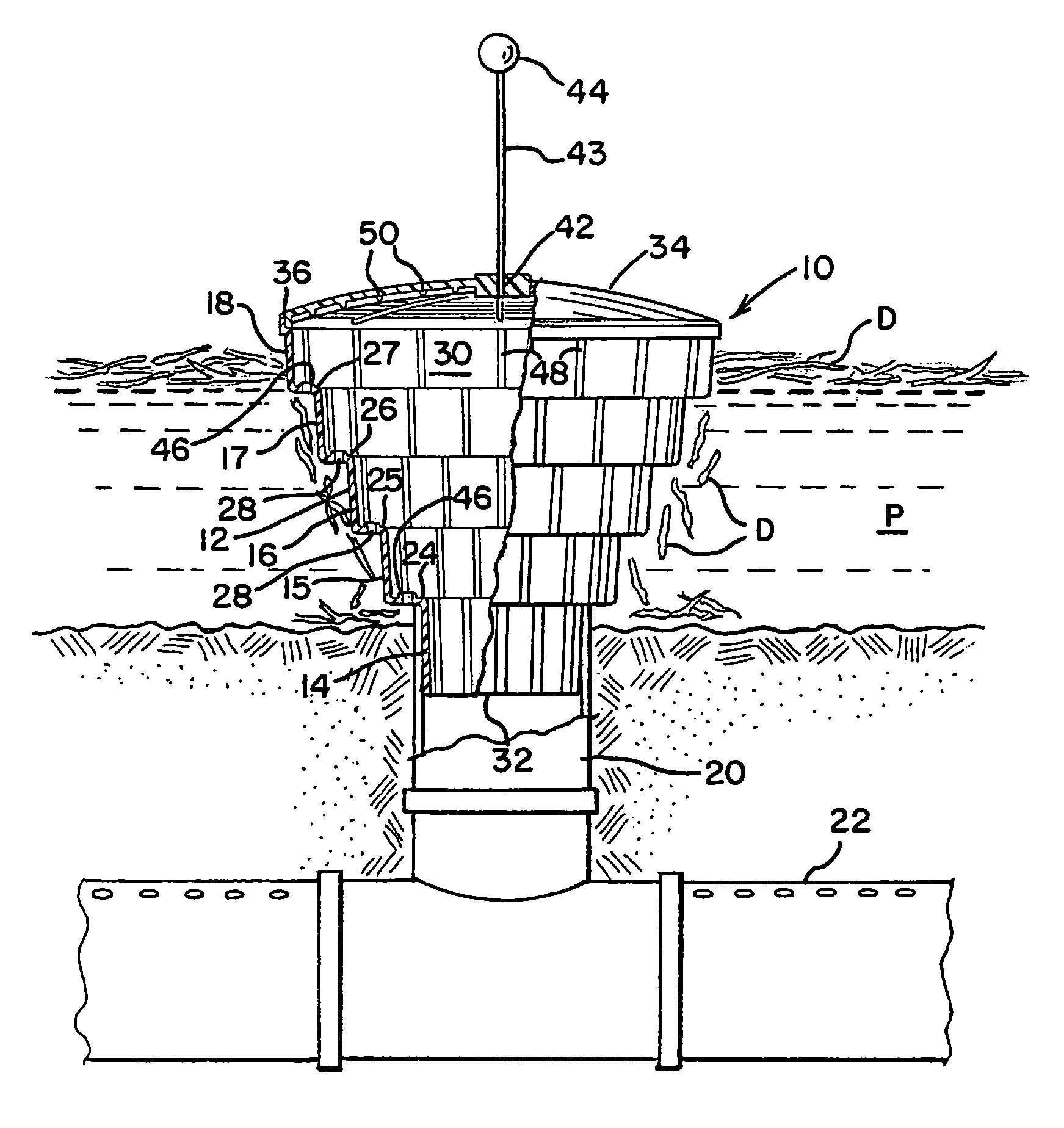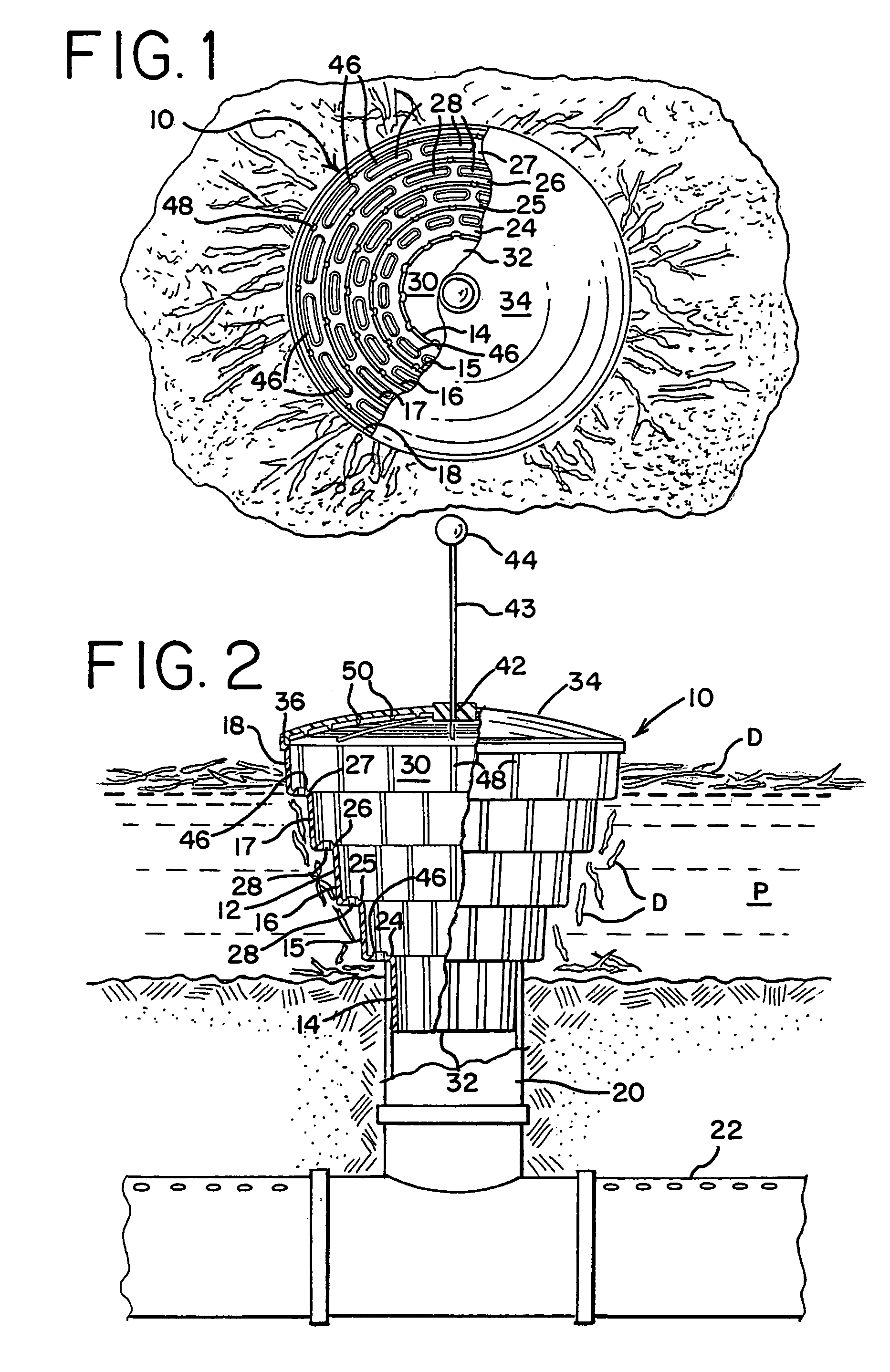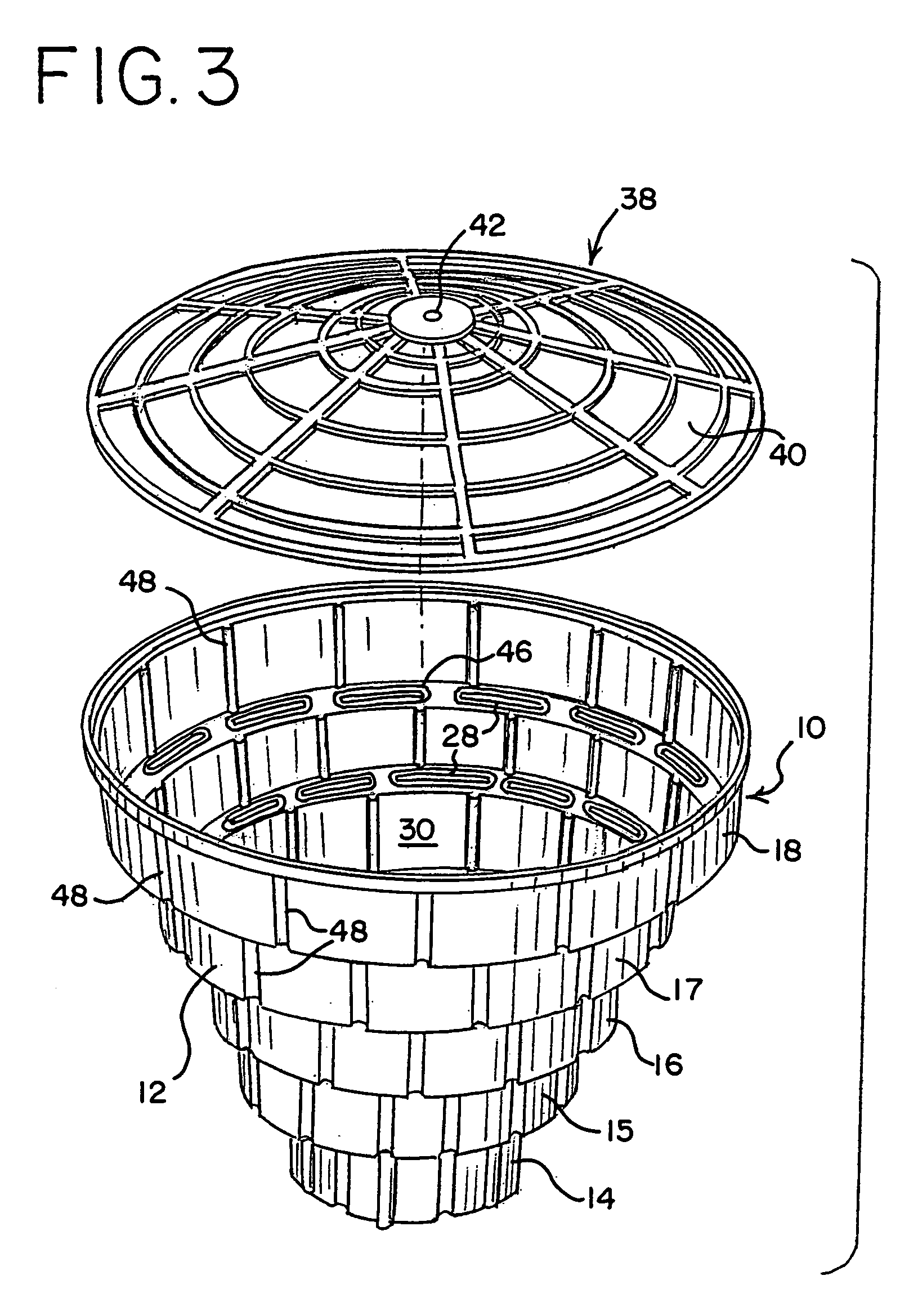Drain inlet
a technology of drain inlet and drain pipe, which is applied in the direction of sewage draining, water cleaning, sewer cleaning, etc., can solve the problems of reducing the flow volume of water being drained, debris in water, and the efficiency of such relatively tall drain inl
- Summary
- Abstract
- Description
- Claims
- Application Information
AI Technical Summary
Benefits of technology
Problems solved by technology
Method used
Image
Examples
Embodiment Construction
[0026]With particular reference to FIGS. 1 and 2, a preferred embodiment of drain inlet 10 of the present invention comprises a generally upstanding body 12 formed of a plurality of generally upwardly extending side walls 14, 15, 16, 17 and 18. The bottommost side wall 14 is preferably tapered to be slightly smaller toward its bottom to enable it to be press fit into the opening in the upstanding inlet 20 of a drain tile 22 which is installed beneath pond P to be drained, as best seen in FIG. 2. The drain tile 22 may either be unperforated or perforated as shown in FIG. 2. The remaining side walls 15–18 also extend upward either vertically or at a slight angle to the vertical.
[0027]The construction of the body 12 is completed by generally horizontal steps which are formed by walls 24, 25, 26 and 27 which extend laterally between the top of the next lower adjacent side wall and the bottom of the next upper adjacent side wall. Although as shown in the drawing the walls 24–27 extend ge...
PUM
 Login to View More
Login to View More Abstract
Description
Claims
Application Information
 Login to View More
Login to View More - R&D
- Intellectual Property
- Life Sciences
- Materials
- Tech Scout
- Unparalleled Data Quality
- Higher Quality Content
- 60% Fewer Hallucinations
Browse by: Latest US Patents, China's latest patents, Technical Efficacy Thesaurus, Application Domain, Technology Topic, Popular Technical Reports.
© 2025 PatSnap. All rights reserved.Legal|Privacy policy|Modern Slavery Act Transparency Statement|Sitemap|About US| Contact US: help@patsnap.com



